Surat – an Agora of Diamonds
Over ninety percent of the world’s diamonds are cut and polished in India, and at the heart of this industry lies the city of Surat. Since antiquity, this port-city has exerted a gravitational pull, drawing traders to its shores and markets.
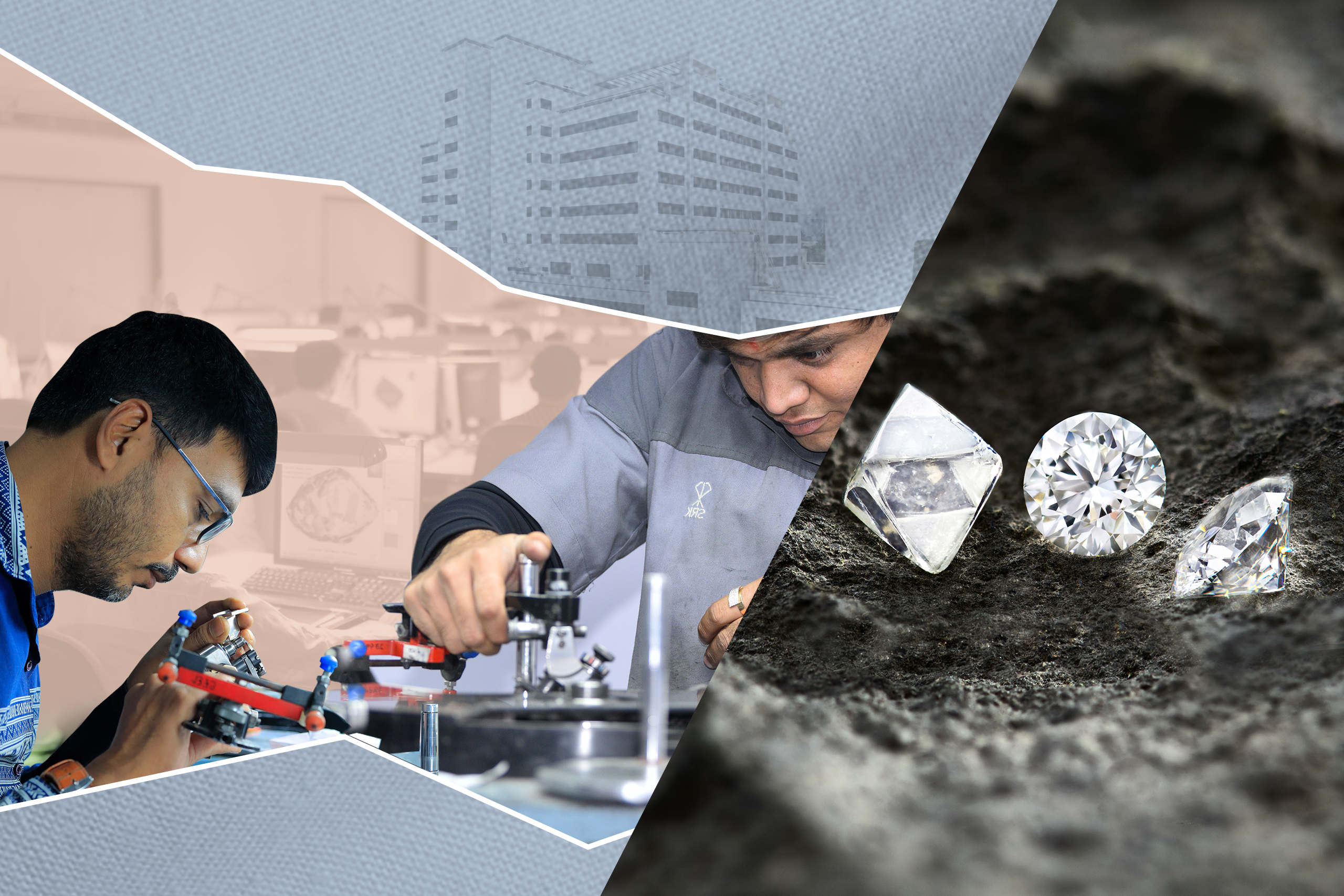
A 17th-century account by French gem merchant Jean-Baptise Tavernier paints a vivid picture of a vibrant Surat, a key entry point for European traders seeking India’s spices, cotton, silk, and natural diamonds. During the Mughal period, Surat earned the nickname of ‘Zari City’ courtesy a unique textile craft, a result of mixing gold, silver and copper threads with silk and cotton.
Surat: The City of Entrepreneurial Spirit
By the early 18th century, India was a global diamond trading hub, aided by the Portuguese; colonial masters of diamond mines in Brazil and the Indian port-city of Goa.
The Surat chapter of the diamond story began in 1900 when two enterprising brothers from the Patidar community, Gandabhai Kuberdas Mavjivanwala and Shri Rangeeldas Kuberdas Mavjivanwala started diamond cutting and polishing in Vadi Faliya area of Surat upon their return from South Africa. It took over 50 years for the small tribe to take steps towards becoming a large scale industry.
The second world war further aided in Surat’s development. Govind Dholakia, Founder & Chairman at SRK Exports, explains. “Before 1940, the business of diamond cutting and polishing was in Yangon, Myanmar (known as Rangoon, Burma). The Japanese invasion of Myanmar caused diamond artisans to return to their hometown, Surat-Navsari, Gujarat, India.” According to Dholakia, merchants sending rough diamonds to Rangoon shifted to Surat. The Zari industry was already flourishing under the leadership of the Patel community. Their entrepreneurial instinct resulted in their involvement in diamond cutting and polishing.
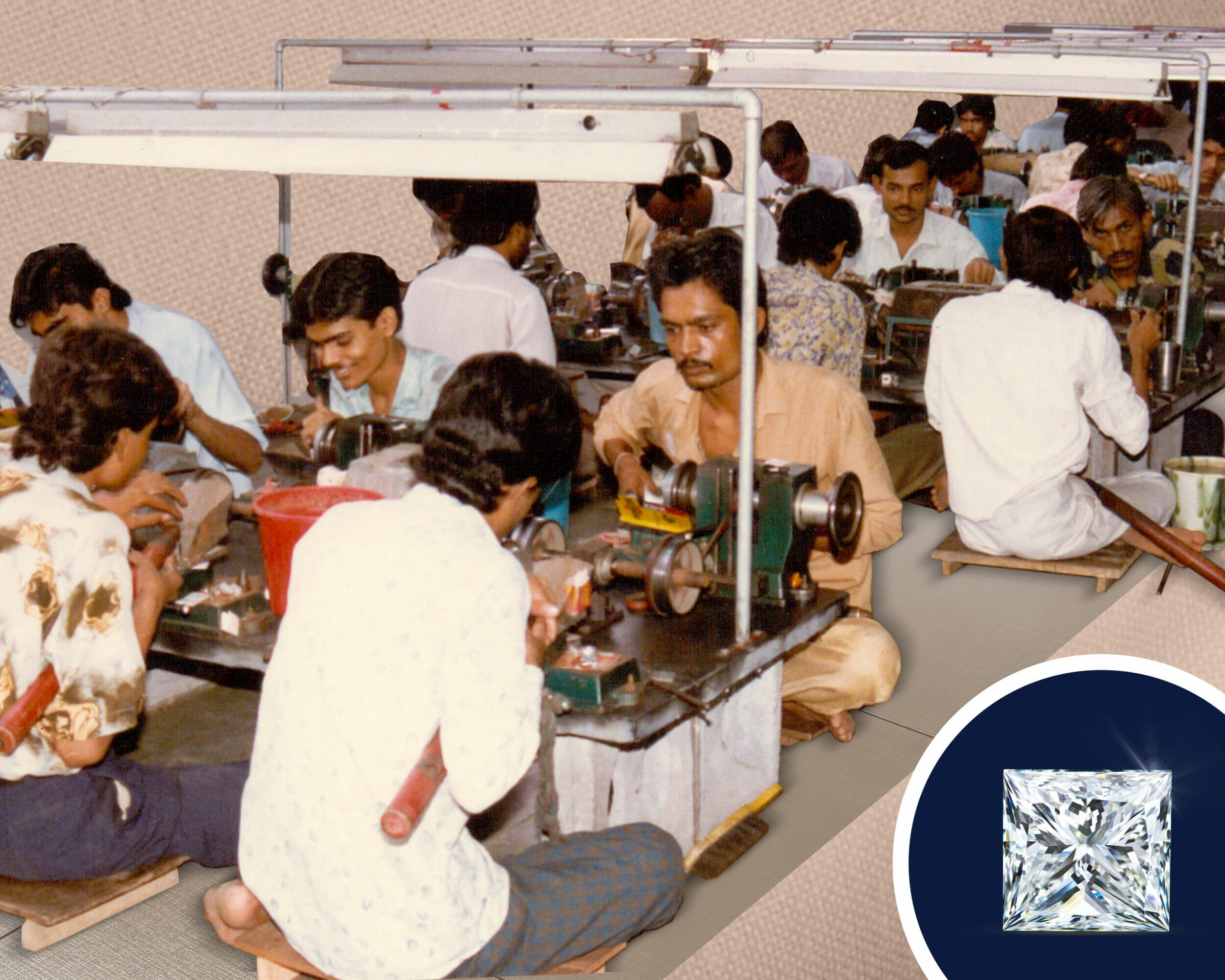
Image: SRK Exports
Decades of Development in Cutting and Polishing of Natural Diamonds
In 1956, Mr H.B. Shah, a diamond merchant in Mumbai, started a cutting and polishing unit for natural diamonds and welcomed workers from other communities. “Until the early sixties, the industry used to get limited rough diamonds from Golconda and Panna mines, sufficient for local market demands,” explains Sevantibhai Shah, Chairman at Venus Jewel. The Indo-China war of 1962 dampened domestic demand for natural diamonds, motivating players to seek international clients. In the mid-sixties, the Export Promotion Council (EPC) was established and the Indian government introduced the replenishment license policy, which permitted the import of rough diamonds equivalent in value to 70% of processed diamond export earnings. The policy was a game-changer, magnifying the scale of diamond processing in India. Few entrepreneurs played a leading role in the industry’s development, namely Hemchand Mohanlal Jhaveri, Kirtilal Manilal Mehta, Chandulal Mohanlal Mehta, Mafatlal Mohanlal Mehta, Ratilal Becharlal Jasani, and Kirtilal Kalidas Doshi.
Progress and Expansion of the Diamond Industry
A network of players originating from India established trading offices in Antwerp, offering diamonds on credit to Indian manufacturers. By 1966-67, diamond exports from India had reached 28 million USD, but this was only the beginning.

Image: Venus Jewel and Dimexon
Well-trained and skilled employees are vital to the progress and expansion of any industry. Till the mid-eighties, India was a processing centre for low to medium-value natural diamonds, with the higher quality goods cut in Israel or Belgium. Venus Jewel’s founder, Sevantibhai Shah, decided to up-skill Indian diamond cutters and created a large-scale, world-class manufacturing environment for high-value natural diamonds in Surat, rewriting the rules of the game.
From mentoring his karigars (workers) in crafting high-value diamonds to strategic planning and managing risk during production, he changed the diamond cutting sector in India, realising greater efficiencies, precision and indisputable quality.

Image: Venus Jewel
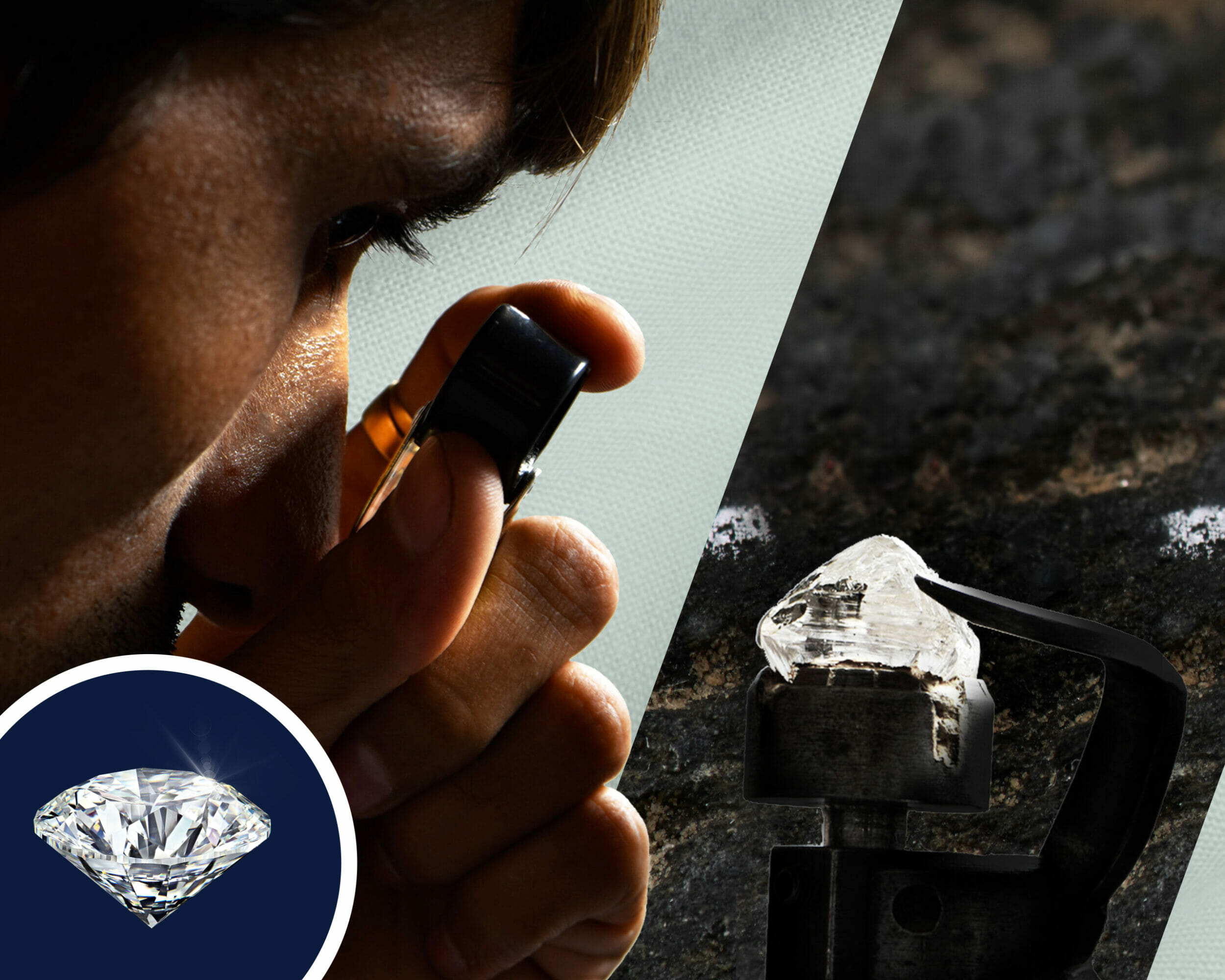
Image: Venus Jewel
The company’s vision was to craft the most beautiful diamonds possible rather than settling for what could be ‘industry acceptable’.
“It wasn’t just about polishing diamonds with 56 facets, it was an opportunity to prove to the world that diamonds cut in India could be at par with the best in the world,”
added Sevantibhai before telling us a notable story from the 1970s: “The workers were used to sitting on the floor and working on the diamond polishing wheel. We realized this was not healthy for their posture. Despite their resistance, we introduced tables and chairs in the manufacturing environment, which later became the industry standard.”
At Venus Jewel, continuous knowledge sharing along with on-the-job training helped upgrade the skills of the karigars. In the 1970s, Sevantibhai Shah introduced a breakthrough performance-based-pay-system which incentivized the artisans to deliver superior quality in their work.
The karigars (workers) of Surat also played a significant role in shaping the industry. From 1960 to 2000, the industry had limited access to technological tools with a mere loupe used to observe diamonds with the naked eye. Regular meetings were held to discuss how to minimize the loss during diamond processing, and decisions were made with the help of the diamond cutters.” explained Sevantibhai.
Ashish Mehta, Partner, Kantilal Chhotalal shares his views, “In my opinion, while Surat’s development as a global diamond processing hub in the sixties and seventies may have been due to lower costs, the graduation towards high-value goods occurred in the late nineties when stakeholders embraced technology. It was no longer about lower costs but the adaptability towards state-of-the-art tech.”
Keeping the Tradition Alive
The karigars (workers) of Surat hailed from agricultural families. They worked hard to not only learn diamond cutting and polishing skills but embraced the use of technology.
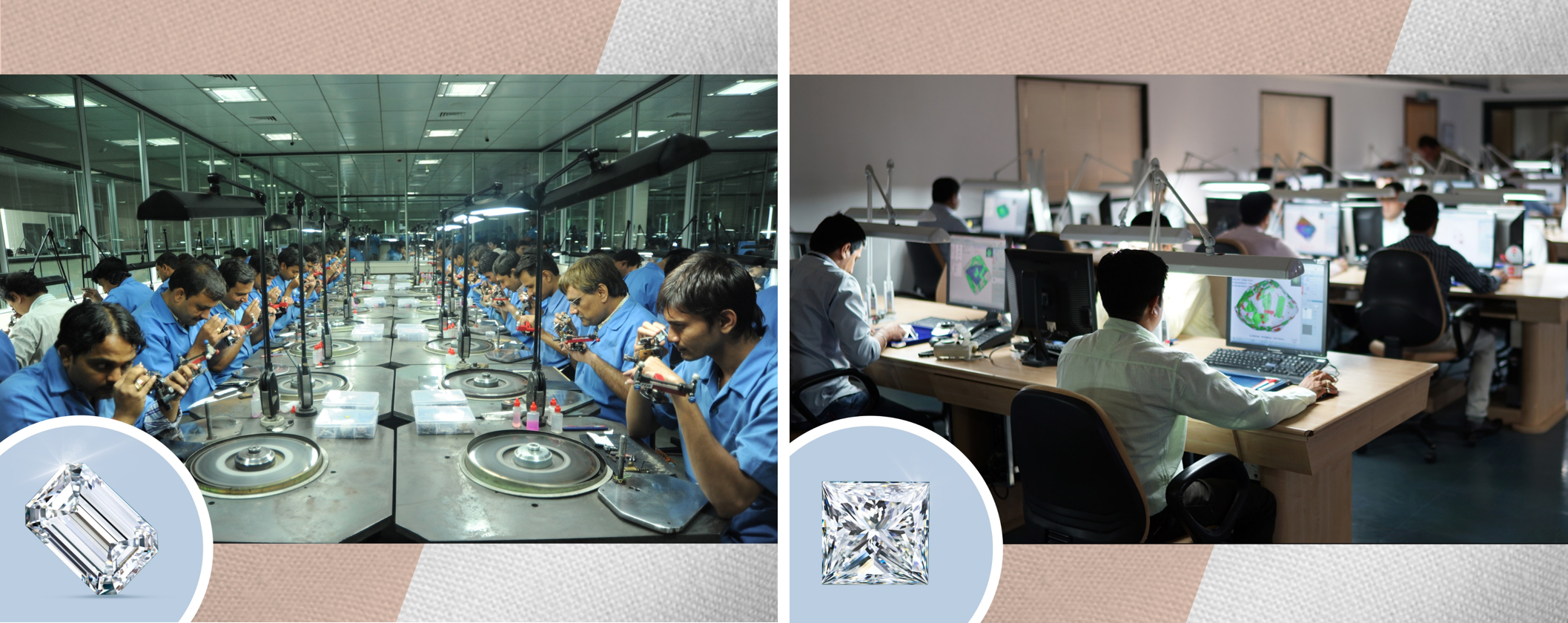
Image: SRK Exports and Venus Jewel
“Our company runs an in-house training institute named SRK Institute of Diamonds (SRKID) for Diamond Cutting, Polishing and Processes. Not only do we maintain day-to-day updates but we also recruit new people by the end of the training,” Govind Dholakia explained. “I believe that at least 3 years or 1000 days of training is required if we want to learn anything new, and that is why we provide training for a minimum of 3 years before fresh recruits start taking responsibilities. This way, they can help develop the business with their theoretical and practical knowledge,” he added.
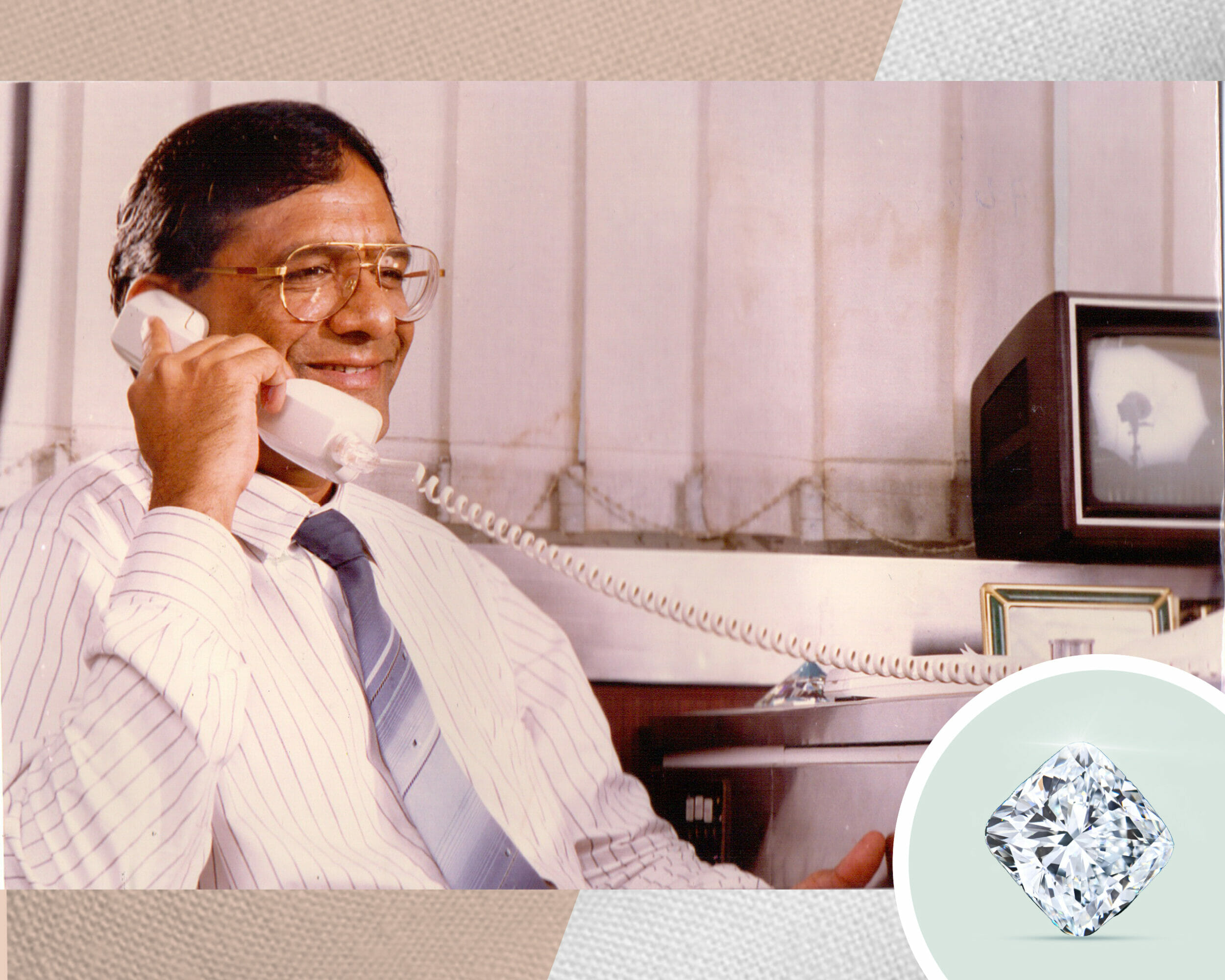
Image: SRK Exports
Besides skill development, Surat’s diamond industry has also instituted safety protocols and financial rewards. “We offer benefits like medical insurance and a SuperAnnuation fund which allows our employees to be self-reliant upon retirement. SuperAnnuation is a company fund accruing 27% of the remuneration which gets paid to employees upon retirement, resulting in one of the lowest attrition rates in the industry,” Sevantibhai added.
Cumulative efforts of the Indian diamond industry have resulted in the country reaching export values of ~18,665 Million USD in the year 2019-20. There are ~a million individuals who directly and indirectly benefit from natural diamonds in Surat. According to industry sources, besides holding its position as the largest diamond manufacturing hub of the world, Surat will soon become the world’s biggest trading centre with the launch of the upcoming Surat Diamond Bourse.
With the unveiling of a 25,000 square feet customs house at the Surat Diamond Bourse, and India’s first diamond auction-cum-exhibition area at Vesu (2,500 sq. ft.), Surat continues to shine as bright as the natural diamonds from its heart.
